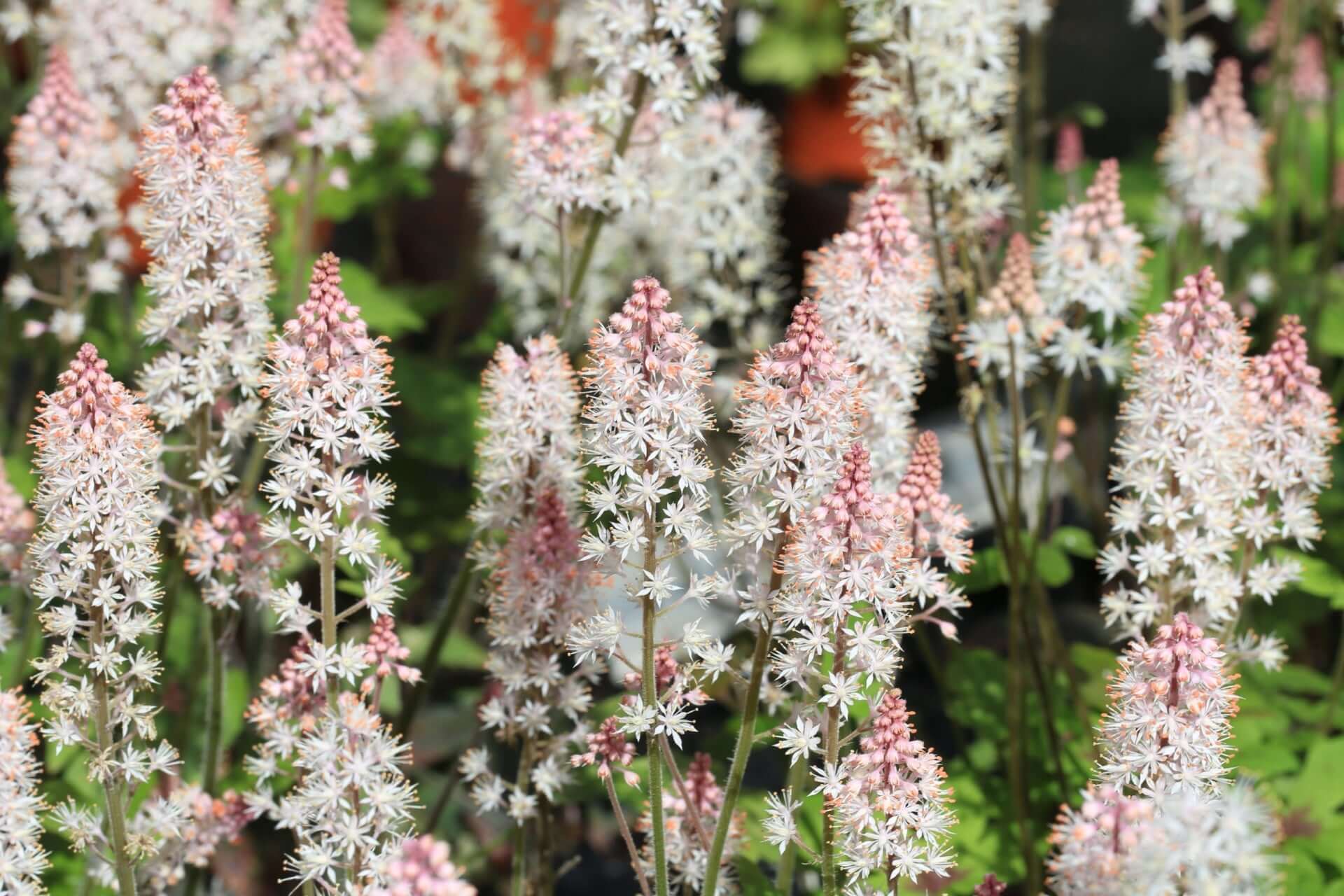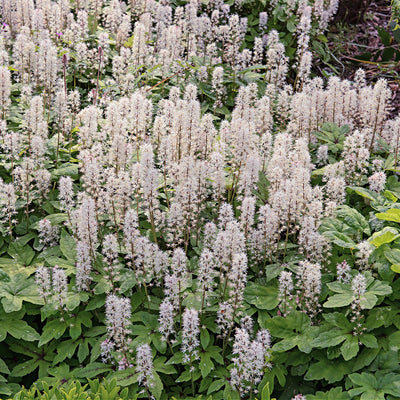Foam flower, also known as Tiarella cordifolia, is a charming woodland perennial that has captured the hearts of many gardeners with its delicate, foamy blossoms and heart-shaped leaves. The plant is often admired for its versatility, easy maintenance, and natural beauty. When planted in shade gardens, it can add a soft, ethereal look to the landscape, brightening up the darkest corners of your yard. Foam flowers are pleasing to the eye and work as a ground cover, creating a lush carpet of foliage that can protect the soil and create a more cohesive, green garden environment. Whether you're just discovering this plant or are an avid fan of native woodland flora, foam flowers can be a versatile and impactful addition to your garden.
Does foam flower spread?
Foam flower does indeed spread but in a gentle, controlled manner. It grows through rhizomes, meaning the plant can slowly expand its presence in your garden over time. This growth habit lets it make dense mats of foliage that cover the soil, making it an excellent option for ground cover in shady or partly shady areas. The gradual spreading allows gardeners to easily manage and guide the plant to the places where it is most needed. Unlike other fast-growing plants that might take over a garden, foam flowers are more modest in their growth, allowing other shade-loving plants to coexist peacefully. This slow, steady spread fills in empty garden spaces and reduces the need for constant weeding, as it naturally outcompetes unwanted plants without being overwhelming. Over time, foam flowers can create a beautiful, cohesive look in your garden, providing texture and color as they weave into the landscape.
What zone does foam flower grow in?
Foam flower thrives in U.S.D.A. zones 4-9, making it a resilient and adaptable choice for many regions across North America. This range covers much of the United States, from colder northern climates to the milder conditions of the southern states. In these zones, foam flowers can survive both the frigid winters and the summer heat, provided they are planted in the right conditions. It prefers moist, well-draining soil and thrives in areas with partial to full shade, where it can receive dappled sunlight through the canopy of taller trees or shrubs. While it can tolerate some sun, too much direct light may cause its leaves to scorch, so a location with filtered light or morning sun is ideal. By carefully selecting the right planting location, you can ensure that your foam flower will flourish, offering its beautiful blooms year after year.
If you live in an area that experiences harsh winters, foam flowers can withstand cold temperatures with proper mulching or protection. The plant naturally goes dormant in the winter, but as soon as spring arrives, it bursts forth with new growth, making it a reliable perennial for seasonal color and texture in your garden. With its adaptability to different climates, foam flowers can be a lasting, low-maintenance addition to any shade garden.
Is foam flower good for pollinators?
Foam flower is an excellent plant for attracting pollinators. Its tiny, delicate blossoms may appear understated to the human eye, but to bees, butterflies, and other beneficial insects, they are a valuable source of nectar. The blooms are clusters of tiny, star-shaped flowers that rise above the plant's foliage on slender stems. This airy display provides a platform for pollinators to land on and collect nectar, supporting local ecosystems. Bees, in particular, are drawn to the foam flower's blooms, making it an excellent addition to any garden aiming to support pollinator populations. The flowers bloom in spring when many pollinators emerge and seek food sources. Planting foam flowers provides them an early-season resource, helping sustain their populations throughout the year.

In addition to bees, insects like butterflies are attracted to foam flower's nectar-rich blooms. The plant's subtle fragrance and airy appearance make it a favorite among pollinators, contributing to the overall biodiversity of your garden. If you want to create a pollinator-friendly garden, foam flowers can serve as a key player, particularly in shaded areas where many other pollinator plants may not thrive. It pairs well with other woodland plants supporting pollinators, creating a habitat that encourages beneficial insects to visit and stay in your garden.
Is foamflower a native plant?
Yes, foam flower is a native plant to North America, specifically the eastern regions of the United States and parts of Canada. It naturally grows in woodland environments, thriving in the rich, moist soils found under the canopy of deciduous forests. As a native plant, foam flower is well adapted to the conditions of these regions, making it a resilient choice for naturalistic or woodland-style gardens. Because of its native status, foam flowers are essential in supporting local ecosystems and providing habitat and nutrition for native pollinators and wildlife. By planting foam flowers, you are contributing to the preservation of native species, helping to maintain biodiversity in your garden and surrounding areas.
Native plants like foam flowers are often easier to care for in the regions where they naturally occur. They are more resistant to local pests and diseases and require less intervention in terms of watering, fertilizing, or pest control. This makes foam flowers a low-maintenance option for gardeners who want to create a beautiful, sustainable landscape. Its ability to thrive in shaded areas also makes it a valuable addition to woodland gardens, where it can complement other native species like ferns, wild ginger, and trillium. If you want to create a beautiful and ecologically beneficial garden, foam flower offers aesthetic appeal and environmental value.
In summary, foam flower is a delightful addition to any shade garden, offering soft beauty, ecological benefits, and ease of care. Its slow, steady spread, adaptability to various zones, and ability to support pollinators make it a versatile and valuable plant for gardeners across North America.


